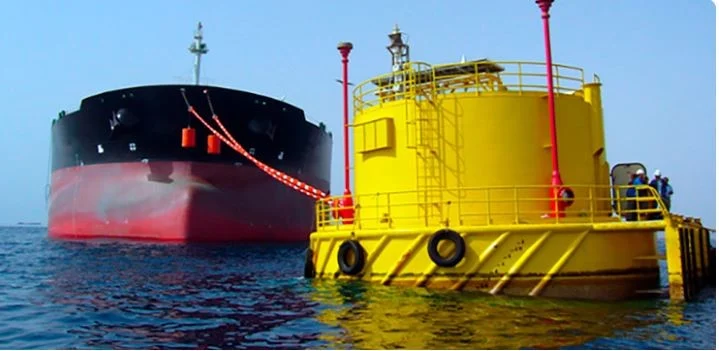Efficiency and safety go together in maritime operations, especially with large oil tankers. But what happens when there is no port nearby? That is when Single Point Mooring (SPM) systems provide a solution. Imagine it as an offshore gasoline station for big ships to take on or disgorge liquid cargo without having to dock at a terminal.
What is a Single Point Mooring?
Single Point Mooring (SPM) is a mooring system offshore connected to the seafloor. It is a floating loading and unloading terminal for tankers mainly of crude oil or other liquid bulk cargo. It is located several kilometres off shore so very large vessels—particularly VLCCs and ULCCs—may safely come alongside and work in deep water.
The name is indicative—”single point” signifies that the ship is anchored at a mid-point buoy so that it can weathervane uninhibitedly around the mooring according to wind and currents.
Why Use an SPM?
Here’s why SPMs are employed on such a large scale in offshore oil logistics:
Prevents port congestion: Large tankers need not wait for berth allocation at shore terminals.
SPMs allow large tankers to operate in deeper waters where ports can’t reach, making offshore loading possible without the need for dredging or coastal terminals.
Round-the-clock operation. Since SPM’s are not impacted by port traffic, cargo transfer can be done at any time.
Less risk. Oil transfer away from land reduces the environmental risk in case of a spill.
How Does a Single Point Mooring (SPM) System Work?
An SPM works by allowing a tanker to moor to a floating buoy anchored to the seabed. Flexible hoses connect the ship to subsea pipelines. They allow for the safe transfer of oil while the vessel moves with the wind and current.
Mooring Buoy: This is the large, floating platform that the tanker ties up to. It stays in place because of strong chains and anchors that are securely attached to the seabed. The tanker is moored to the buoy, so it can swing around this axis freely.
Floating Hoses: These hoses are specially designed to connect tankers to mooring buoys. They are designed to withstand high pressure and constant wave impact. Their job is to safely carry oil or liquid cargo either from the ship down to the subsea pipeline or from the pipeline up to the vessel. Once connected, they create the crucial link between offshore transfer operations and onshore storage or processing facilities.
PLEM (Pipeline End Manifold)
The Pipeline End Manifold (PLEM) is a subsea structure fixed to the seabed, acting as the key connection point between floating hoses and the underwater pipeline system. It directs the flow of oil or liquid cargo between the mooring buoy and onshore facilities, ensuring safe, efficient offshore transfer operations.
Hawser system: Synthetic or wire ropes of high tensile strength are employed to secure the vessel firmly to the buoy.
After being moored, the tanker weathervanes with the weather while having a steady connection for cargo transfer.
Operations & Safety
SPM operation is no laughing matter. It requires:
Accurate alignment during approach
Mooring teams who know what they’re doing
Round-the-clock monitoring of weather, current, and tension
Stringent maintenance schedules for hoses and chains
Also, prior to connection, the tanker crew and the terminal operators check for compatibility of systems, emergency shutdown facilities, as well as communication protocols.
Where Are SPMs Typically Located?
SPM terminals are located throughout oil-abundant coastal regions, particularly in:
Middle East (for example, offshore Saudi Arabia and UAE)
West Africa
India (for example, Vadinar, Mumbai High)
Brazil & Gulf of Mexico
They are the backbone of crude oil logistics where port facilities might not accommodate giant tankers or where offshore fields are distant from the coast.
Final Thought
Single Point Mooring systems silently manage some of the largest offshore cargo operations on the planet. By keeping tankers offshore, far from congested ports and shallow waters, SPMs ensure oil transfer is safer, faster, and more efficient. For anyone considering a career in tanker shipping or terminal operations, knowing how SPMs function isn’t a choice—it’s required


